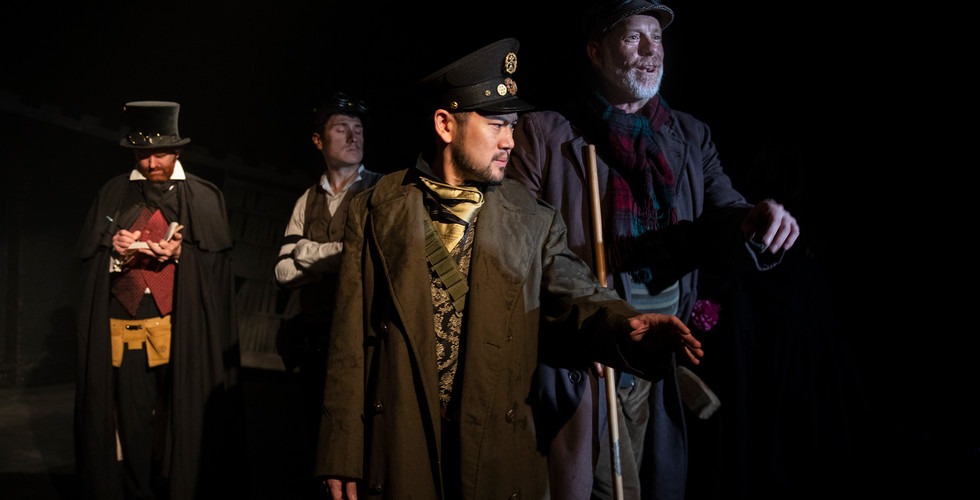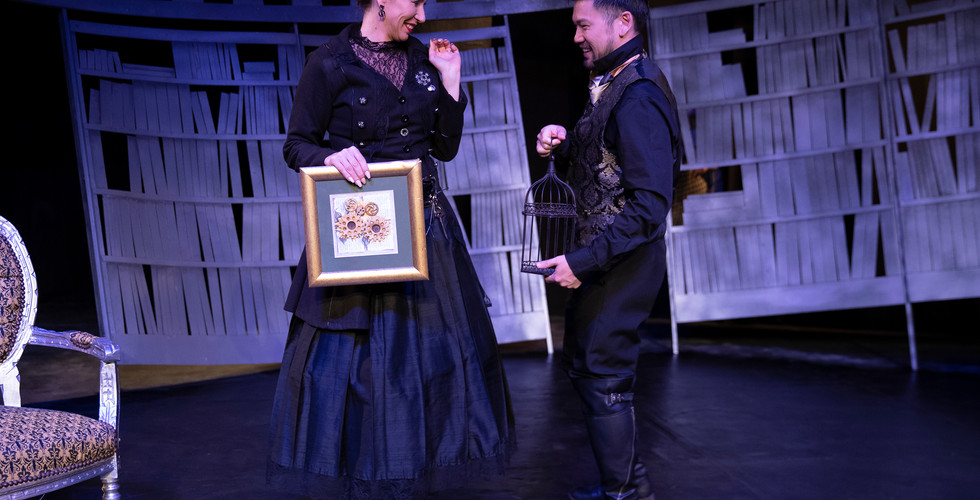Review: Pygmalion at the New Theatre
- Theatre Travels

- Apr 26, 2019
- 4 min read
By Fred Pryce
In Pygmalion, written by George Bernard Shaw in 1913, two gentleman-scholars make a highly unusual bet: that one of them can transform a poor flower girl into a duchess, something unheard of within the rigid class structure of Edwardian England. The name comes from an Ancient Greek myth, of a sculptor who creates and falls in love with a statue of a beautiful woman, but Shaw’s play is now far more culturally ubiquitous, to the point of becoming mythic itself. It famously serves as the basis for My Fair Lady, as well as teen comedies She’s All That and The Duff, and the trope of the ‘complete makeover’ now carries well-worn connotations about society’s perception of women.
Importantly, this flower girl is no mere passenger to more powerful men’s whims. Rather than being plucked from obscurity, Eliza Doolittle (Emma Wright) actively seeks it out, demanding to be taught to speak “proper” English and offering to pay what little she has. Practically unintelligible at first, Wright imbues Eliza with an exaggerated physicality that reveals both her wariness and her opportunism, showing her intellect far before her speech patterns change. Despite this deliberation, the thick lower-class accents of Eliza and her company make the messy opening hard to understand at times, and the scene lacked control over its ensemble and staging. But this shaky start quickly eroded into a confident, well-paced comedy that grew better with every minute, a quality matched by Wright’s performance. The first reveal of her new persona to the stuffy elites is particularly hilarious, her voice and posture perfectly modulated to mimic poshness as one does a foreign language. But the best is saved until last, in a dazzling confrontation between Eliza and Henry, her chief tormentor, that unleashes the complex emotional and social burdens she now bears. Their strange connection is too incendiary and uneven to last, weighed down by a history of classism and sexism as she cries “Why did you take my independence from me?”
Henry Higgins is a bull of a man, and the fragile confines of high society are his china shop. Outrageously brash and offensive, he asserts his dominance through words rather than fists, though this intelligent and eloquent veneer seems no less violent. Speaking the most by far (and usually over someone else), Steve Corner brings an electric presence to the character that matches his looming stature, transforming wordplay into swashbuckling attacks while bellowing insults (“You squashed cabbage leaf” is a favourite). He remains compelling while also highlighting Henry’s rude childishness and subtly mocking him, an impressive feat to watch. Shan-Ree Tan is suitably composed and charming as his more gentlemanly conspirator, though he is also shown participating in mockery of the poor. Though his manners and good behaviour are rewarded, a polite oppressor still remains complicit. Importantly, other women in the play are well-aware of the pair’s foolishness, including a hilariously fed-up Mrs. Pearce (Natasha McDonald, sporting a well-chosen Spanish accent), and Henry’s wise mother (Colleen Cook), whose frustrated shouts of “Men! Men!” close Act 1. Mark Norton as Eliza’s father was an unfortunate weak link, a halting and repetitive speaking manner displaying little of the working-class philosophy he professes, or sufficient physical threat.
The true star, however, is Shaw’s writing, which remains dazzling, witty, and pointed 100+ years on. The production has chosen to advertise using Shaw’s socialist and feminist beliefs, and his play indeed remains all-too-relevant, attacking a system that allows rich, white men to trample women and workers underfoot (a prominent scene involves the gentlemen talking at length about Eliza as if she wasn’t present), at a time when class mobility was about to shake the foundations of their entrenched elitism. Ruthlessly funny and occasionally poignant, it builds to an ending that eschews tradition, and points the way to a future where the Henry Higginses of the world no longer run rampant.
What is now dated is steampunk, a type of science-fantasy that focuses on steam-powered industrial technology, and which this production has used as inspiration for its aesthetic. Though ties to the Industrial Revolution and subsequent changes in class structure lend it thematic weight, the association with 21st century pop culture (Pygmalion! At The Disco, anyone?) has sullied it, especially when the design amounts to throwing a few decorative cogs loosely onto the floor and a few people’s hats. A small shame, given the otherwise smart design of the set (Tom Bannerman), allowing for effective and uncluttered staging. Deborah Mulhall’s direction is crisp and unshowy, with an impressive understanding of placement. Whether a character is placed forwards, backwards, standing, sitting, or pacing an elevated ramp, it always connects to the drama of the scene, and the pacing was almost always spot-on. It’s hard work making such ornate writing seem effortless, but this Pygmalion is a fun and thoughtful night at the theatre.
Photo Credit: Bob Seary
All opinions and thoughts expressed within reviews on Theatre Travels are those of the writer and not of the company at large.














































